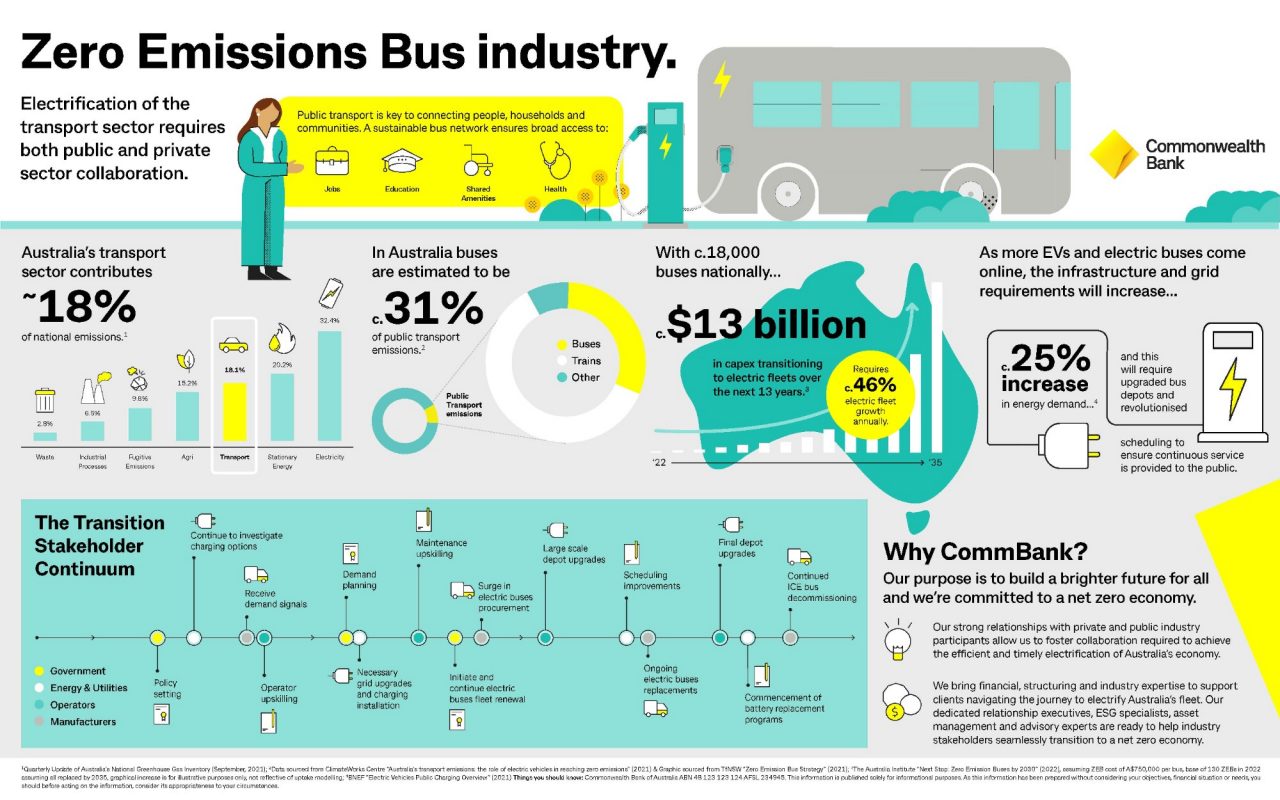Higher costs with higher upsides
While the benefits of moving to zero-emissions buses are clear, Potgieter says a full-scale transition to electric or hydrogen vehicles needs a concerted and collaborative effort across manufacturers, government, bus operators, and the wider community, including the finance sector.
“Electric buses, at between $700,000 and $1 million each, can cost 30% more than diesel buses upfront, and their useful life may be shorter. Lenders need to recognise and help address the challenge of making a large upfront investment that will take time to deliver return.
“While the initial investment is high, overall, there’s an economic upside. Fuel is by far the biggest expense associated with diesel buses, and if this cost goes away, the economic benefit is substantial. On current figures, electric buses save $275,306 over a bus’s life.”
Marion Terrill, Transport and Cities Program Director for Australian public policy think tank, the Grattan Institute, agrees that the up-front costs are high, but says that won’t always be the case – and the environmental benefits are substantial.
“In terms of the upsides, obviously, lower emissions is the most front-of-mind, but it’s also the case that one of the reasons people don’t like buses is because of the tailpipe pollutants,” says Terrill.
“Zero emissions buses are much better on that front, when your typical diesel buses spew out localized pollutants, which are usually in the city and bad for health.”
She says electric buses are more expensive, but “it seems like with heavy vehicles generally, the cost is coming down”.
“Of course, they’re much cheaper to run, but the high upfront cost is a bit of a barrier. One of the things that is interesting is that there’s a lot of interest in them as part of a local manufacturing push.”
She says that while uptake in Australia has been slow so far, there has been serious acceptance in more mature European markets and commitments Down Under to speed up deployment.
“We reckon that there is about five (electric buses) in Victoria, at least 40 in NSW, and a handful across Queensland, South Australia - but globally speaking, 17% of buses are electric – most of the world’s electric buses are in China.”
“In NSW they’ve got a goal of transitioning the entire bus fleet to zero emissions by 2030. In Victoria, the same from 2025 - all new buses are going to be zero emissions. In Queensland, every new Translink bus will be zero emissions from 2025 in southeast Queensland and a bit later than that across regional Queensland.”
Still, the market faces other challenges, including the availability of charging infrastructure. But again, Potgieter says with strategic planning and investment, this can be addressed.
“Charging infrastructure will need to be developed in order to service new fleets, and there is certainly much work to do around understanding the requirement, but we’re seeing rapid development of technology, and associated falls in cost, which will make projects more feasible.”
Growth opportunities are accelerating for manufacturers, bus operators and investors
Overall, Potgieter says the sector is ripe for change, and bursting with opportunity. He says improving clarity around government policy and guarantees around demand will underpin confidence and investment in the Australian market.
“As a right-hand drive market, Australia will receive less attention and supply from global chassis manufacturers until government policy on fleet requirements is clear. Likewise, knowing government policy and demand is essential to local manufacturers and others in the value chain. Australia has been slow off the mark in EV policy, but the past 12 months have seen new policies emerge at both the state and federal level, and this will inspire production.”
While there are a lot of moving parts and a lot of questions to be resolved through government and business collaboration, Potgieter says the key takeaway is that the transition to electrification and other net zero technology is already underway and will only accelerate. He says CommBank is already enabling projects in the space.
“We’re conscious of the essential role finance and capital will play in this transition, for example, in NSW alone, the transition to electric buses will cost $6 billion over the next 8 years. CommBank is engaging with the relevant stakeholders, increasing our market understanding and building our capability. We’ve already partnered with customers who are looking to stay ahead of the curve, and we’re proud to say we’re working on some exciting opportunities.
“We’re keen to talk to manufacturers, bus operators, investors and governments about how we can support them to take advantage of this transition opportunity.”
We’re here to support your sustainability journey
Discover our tools and tailored solutions to help you and your business towards a more sustainable future.
Visit sustainability hub





